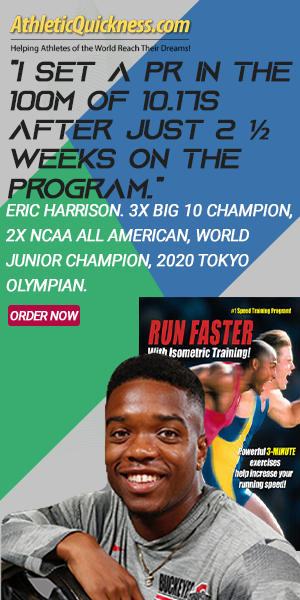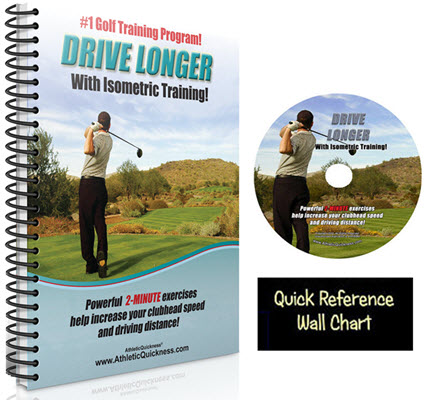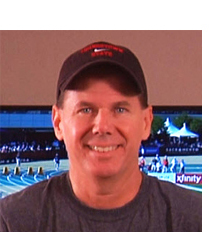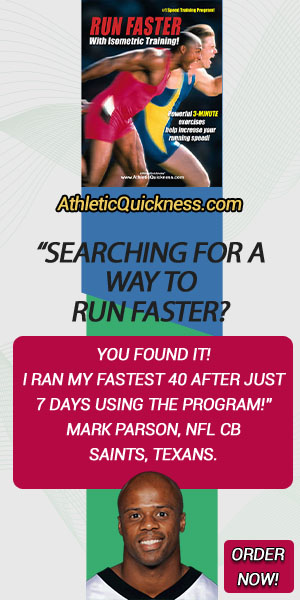Hit longer drives with Golf Swing Muscle Training
Understanding and strengthening the muscles used in the golf swing will help perfect your golf swing and lower your score – And so much the better if you can do those golf exercises at home!
You may not know the muscles’ names; but, you can begin to appreciate how perfectly the human body was designed. And, if you really apply yourself and do the proper research, it isn’t long before you arrive at an entire list of muscles that need the proper training and conditioning that go into the perfection of a skill, such as the golf swing.
There Are Basically 22 Muscles Involved In the Forward Golf Swing
Proper Conditioning of These Muscles Will Increase Club Head Speed and Give You Better Control
With AthleticQuickness.com, the nice thing about our golf exercise program is that we already have taken the time to identify the various muscles that need to be conditioned to increase your golf swing speed.
In this article, we are going to list all those muscles involved in the forward golf swing as also described in the DRIVE LONGER with Isometric Training program.
The Golf Swing
The normal golf swing has three basic components:
1) The back swing
2) The forward swing or downswing
3) The follow-through
The backswing is like the wind-up in baseball. It stretches your muscles and readies them for release during the forward swing. The forward swing or “release” part of the golf swing is when 100% of your speed and power is generated. This is what will determine your shot distance. The follow-through is what a lot of people say defines your “signature” as a golfer … i.e., how you finish your swing defines your commitment to the game.
Because the forward swing is where 100% of your speed and power is generated, it is for this particular movement that we will define the muscles involved. The forward swing begins with your hips rotating laterally from right to left for the right-handed golfer (just the opposite for the left-handed golfer). This is the main function of the lateral rotators of the hips, and the names of these muscles are as follows:
Lateral Rotators of the Hips
Gluteus Maximus
Gluteus Medius
Quadratus Femoris
Pyriformis
Superior Gemellus
Inferior Gemellus
Obturator Internus
Obturator Externus
Gluteus Minimus
The forward swing continues next with lateral rotation of the spine and the names of these muscles are as follows:
Lateral Rotators of the Spine
External Abdominal Oblique
Multifidus
Rotatores
Once the spine has rotated, the shoulders also begin to rotate and a downward pulling motion of both arms takes place from right to left (for the right-handed golfer), beginning over the right shoulder and passing in an arc-like fashion downward through the point of contact with the ball where both forearms end in full extension. This is the main function of the primary movers of the arms and extensors of the forearms.
Primary Movers of the Arms
Pectoralis Major
Posterior Deltoid
Teres Major
Latissimus Dorsi
Extensors of the Forearms
Triceps brachii
Anconeus
The muscles activated during the downswing are the primary movers of the wrists or wrist flexors and extensors. (Note that for the right handed golfer, the right wrist flexors and left wrist extensors are activated.)
Primary Movers of the Wrists (right handed)
Right flexor carpi radialis
Right flexor carpi ulnaris
Left extensor carpi radialis
Left extensor carpi ulnaris
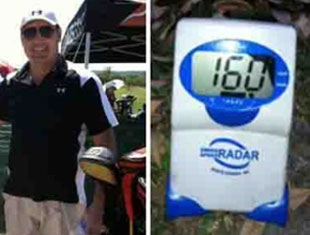
Dr. Van Such, For some years, I’ve been using your Golf Program and have gotten great results.
I compete in the RE/MAX long drive competitions, and I feel I have a real shot at making the world finals this year.
Here’s a photo of the swing speed radar I use showing a recent all-time best, thanks to your program.
I believe the additional exercises you’ve shared with me will be a great addition and provide an additional 5-7 mph that I feel I’m leaving on the table.
Your program is the best! As a scientist by training, I appreciate this program because it’s not just a theory, it actually works!
Again, thanks for the brilliant program and the incredible successes it brings.
Warren Bankston
RE/MAX world long drive Regional Championship
There you have it — twenty-two muscles that are primarily involved in the forward swing and need to be conditioned to increase your golf swing speed.
If you want to increase your clubhead speed and start hitting longer drives, then you will need to speed up the contraction rate within these muscles.
And, the golf exercises in the DRIVE LONGER with Isometric Training program will show you just how simple and easy it is to do.
These golf swing exercises are totally effective at targeting the precise muscles used in the golf swing and making them stronger and faster. You can do these revolutionary golf exercises at home without any special equipment and without using any golf clubs.
You just need the exercise manual or videos and the supplied resistance bands. These exercises are easy to do, they are not strenuous and only take 20 minutes to complete. You will start to see and feel the results in days.
As you will see on this page the exercises are used by golf professionals, Long Drive competitors, and golfers of all ages and skill levels with amazing results.
“I usually never write to companies but I had to report my success with utilizing your isometric band system for longer golf drives.
As of two weeks ago my drives were clocked an average of 107mph with the fastest swing speed of 111 – after following your program for two weeks my golf swing speed was just clocked at the range using a doppler radar at a consistent average of 115mph with a high of 119mph – Amazing!!
I’m going back on to the training and wanted to say thank you for the results of your product (system) – it is simply the best.”
G. Williams – PA
Always glad to help!
Dr. Larry Van Such

